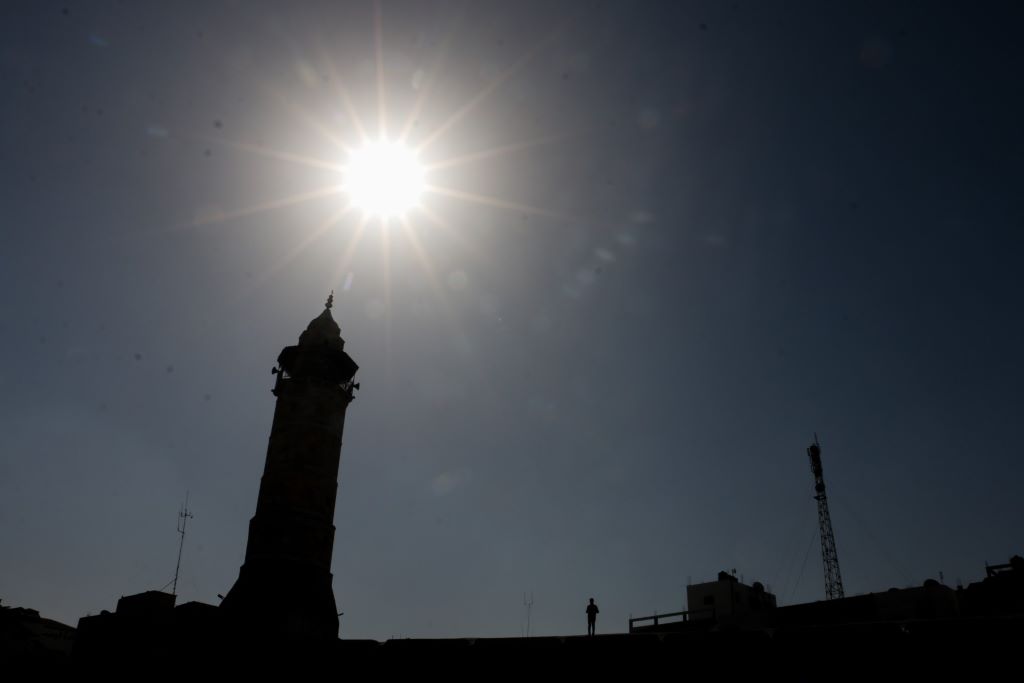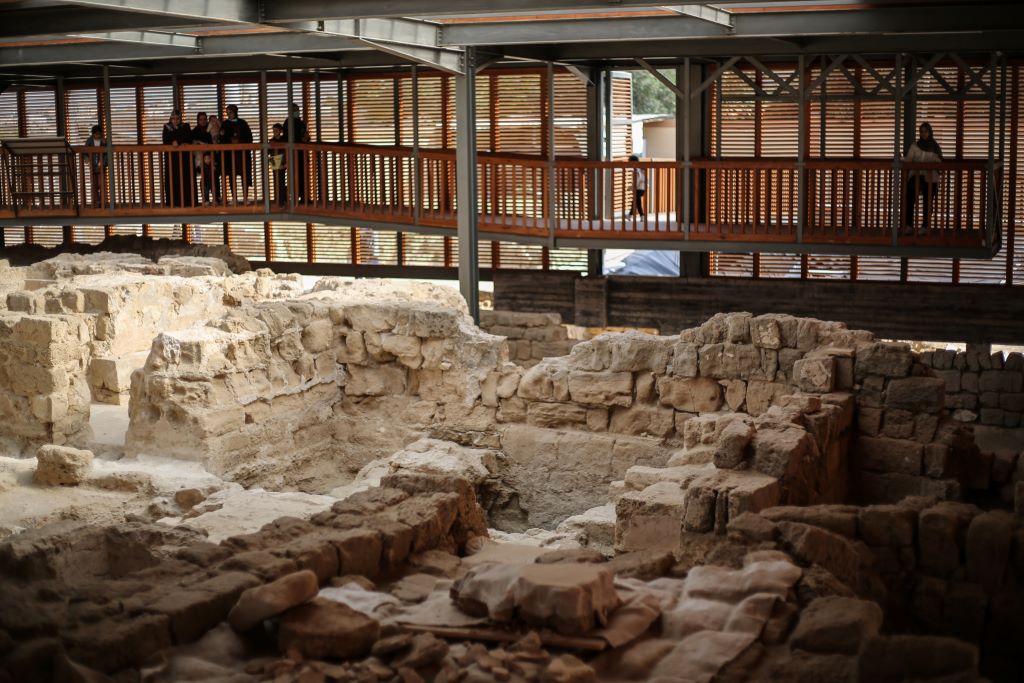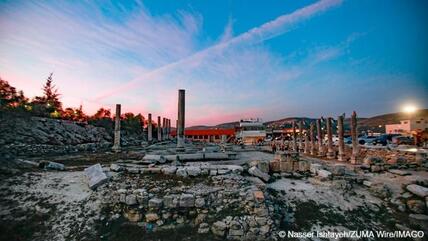Forgotten or destroyed

The ancient Egyptians and the Persians were there, so were the Arabs, and of course the mysterious Philistines: the Gaza Strip has been an important centre of human culture since time immemorial. But wars and periods of occupation and political turmoil mean that this heritage has been little researched or documented.
Wolfgang Zwickel, an archaeologist based in the German city of Mainz, is working on a book about all known historical sites in this tiny sliver of land. And in the face of the heavy military bombardment by Israel, he has begun to wonder whether Gaza will have any historical sites left by the time the book is due to be published in the summer of 2024.
Zwickel lectures in biblical archaeology at Mainz's Gutenberg University. Although countless research and excavation trips have taken him to Israel over the years, he has never been able to visit the Gaza Strip.
"We have almost no useful historical knowledge about Gaza," he says. And yet Gaza is mentioned in the Old Testament – in the tale of Samson, for instance, the Israelites' almost invincible warrior. Ultimately, Samson fell into the hands of the enemy Philistines, who blinded and humiliated him.

At the intersection of cultures
The Bible tells us that, summoning up all his supernatural strength one last time, Samson tore down the pillars of the mighty temple. "Then he pushed with all his might, and down came the temple on the rulers and all the people in it. Thus he killed many more when he died than while he lived," according to the Book of Judges (Judg. 16: 30).
Historical evidence shows that Gaza was one of the five city-states that made up the Philistine territory. The remains of the once significant settlement at Tell el-Ajjul date back to the Bronze Age. Gaza became the most important port on the eastern Mediterranean before the start of the Christian calendar.
In 1997, the remains of an early Christian monastery surrounding the tomb of St Hilarion of Gaza were discovered. The Palestinians hoped to have it named a UNESCO World Heritage Site. In the Islamic period, during the early Middle Ages, large parts of Palestine were governed from Gaza.

Dispute about the site of biblical Samaria intensifies
In the Palestinian village of Sebastia in the West Bank, clashes between Palestinians and Israeli soldiers are becoming more frequent. A long-simmering conflict over archaeological treasures in the village threatens to escalate. Details from Joseph Croitoru
Archaeology is not a priority
Zwickel, who had the idea for his book eight years ago, pulled together everything that is known about sites of historical interest in the Gaza Strip: "I collected a total of 230 sites," he says, adding that there was scarcely any detailed knowledge about some of them.
According to Zwickel, the only detailed essay on the cultural history of Gaza City was written by the Austrian Georg Gatt, who set up a Catholic mission there in the 1880s and described the city's various districts with their buildings and wells. After a few excavations by the British, says Zwickel, almost nothing more happened in the decades under Egyptian military rule.
During the period of Israeli occupation, more excavations and surface investigations of historical sites in the Gaza Strip did take place, according to Zwickel, but the results remain largely unpublished. "We don't even know where the documentation is," he says. The handover of administrative control to the Palestinian authorities and the later takeover of power by Hamas made the situation worse.
Numerous archaeological sites and some significant Islamic architecture from the Middle Ages had already been destroyed in previous wars and then built over. The Gaza Strip is one of the world's most densely populated regions and, as a rule, the need to build homes quickly has forced archaeology to take a back seat.
Hardly any excavations
In the years of Hamas rule, few foreign researchers have managed to gain access to the area. Frenchman René Elter is one of them. In early October, he was still working on a necropolis from the Roman period and was stuck in Gaza for weeks after the start of the war. "We are very afraid for the archaeological sites," he said on French television on his return to France. According to Elter, much has already been destroyed by Israeli bombing.
Current reports from Israel and the Gaza Strip are also leaving the Mainz archaeologist Wolfgang Zwickel in despair: "It makes me weep," he says, adding that he knows that in the face of the death and suffering of the civilian population, archaeology isn't exactly the top concern for people in the crisis-hit region.
In light of recent events, the academic, who has worked alongside both Israelis and Palestinians, finds it harder than ever to imagine what peace in the region might look like. All the same, he is already planning his next trip to Israel in April.
© epd/Qantara.de 2023
Translated from the German by Ruth Martin
